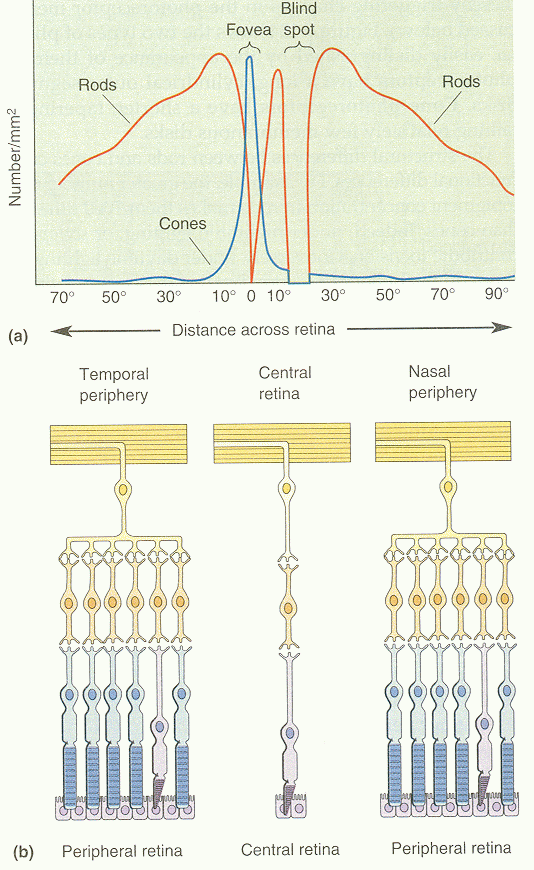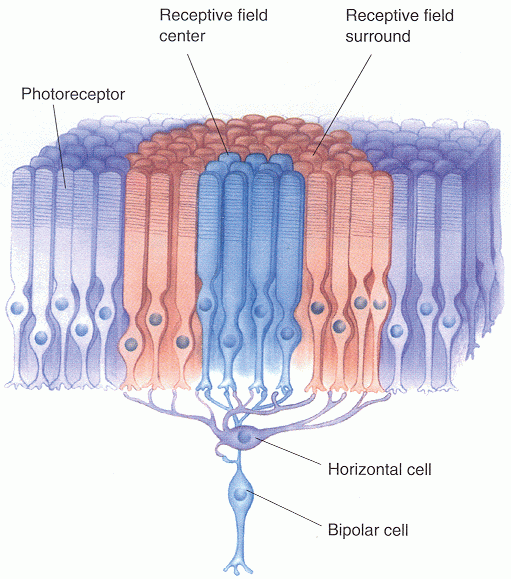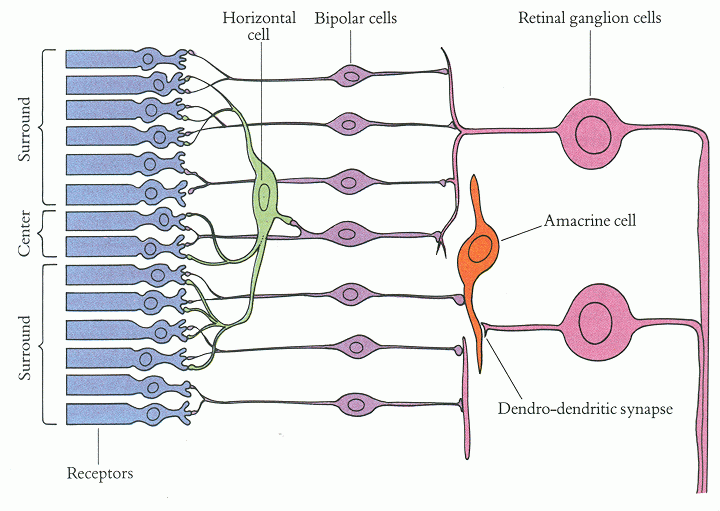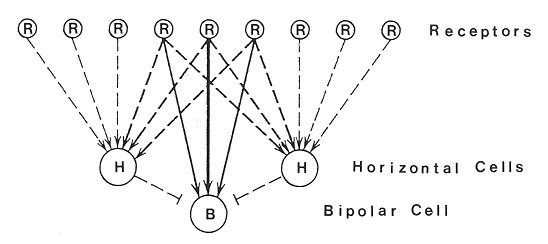Bipolar cells receive inputs directly from the photoreceptors. There are two main types bipolar cells:
- The midget bipolar cells:
Each midget is only connected to a single cone receptor, mostly in the
fovea where acuity is highest.
- The diffuse bipolar cells: With more spread out dentritic field, some diffuse bipolar cells are connected to several (5 to 20) cones, and some others are connected to from 20 up to 50 rods.
The bipolar cells are the earliest cells along visual pathway with antagonistic center-surround receptive field (RF) structure of two different types: on-center/off-surround and off-center/on-surround.

As their name suggests, horizontal cells receive inputs from the photoreceptors over a much larger area of retina than the bipolar cells. The horizontal cells are thought to be responsible for the surround of the center-surrond structure of the the bipolar cells' receptive field. The center of a bipolar cell is supplied by direct synaptic (excitatory or inhibitory) from a small group of receptors (rods or cones, never both), and the surround (always in opposite state) is caused by the indirect input from other receptors (surrounding those feeding the center) through the horizontal cells. This is the so-called R-H-B circuit.




